The Dolmen of Guadalperal, or “The Spanish Stonehenge,” is an ancient stone circle that has resurfaced after decades underwater. Dating back over 7,000 years, this mysterious monument invites curiosity into Spain’s prehistoric past, offering a rare glimpse into ancient civilization and its enduring secrets.
Dolmen of Guadalperal: The Spanish Stonehenge
The Dolmen of Guadalperal, often referred to as the “Spanish Stonehenge,” is one of Spain’s most enigmatic and awe-inspiring prehistoric monuments. Situated near the banks of the Tagus River in the province of Cáceres, this megalithic structure has intrigued historians, archaeologists, and tourists alike. Rediscovered after being submerged for decades, the dolmen has become a focal point of both historical inquiry and cultural preservation.
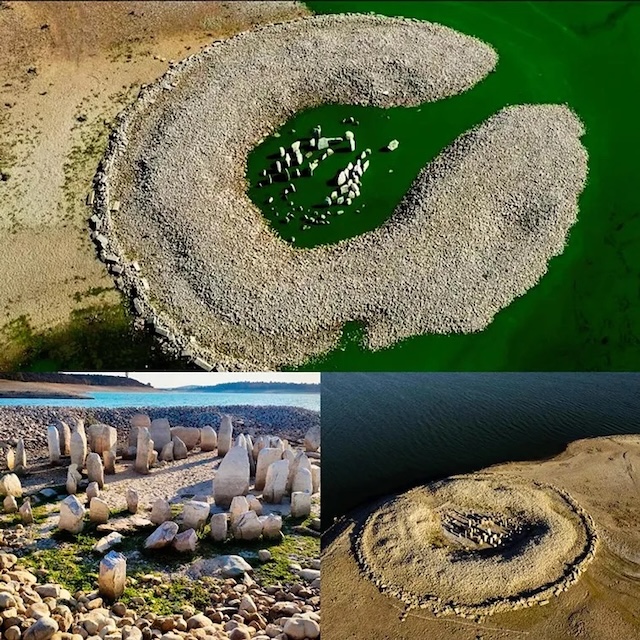
History and Discovery
The story of the Dolmen of Guadalperal begins in the 1920s when German archaeologist Hugo Obermaier first discovered the site. Obermaier, renowned for his work in prehistoric archaeology, recognized the significance of the dolmen as a ceremonial structure, likely used for religious rituals or as a burial site. The monument consists of large vertical stones arranged in a circular formation, with a central chamber that would have housed the remains of the deceased.
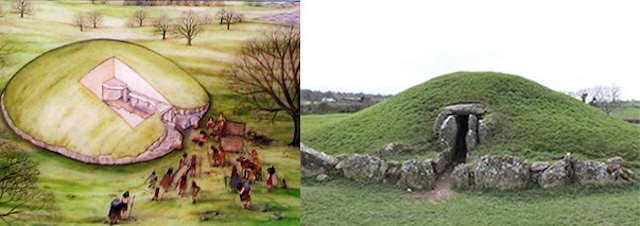
However, the dolmen’s fate took a dramatic turn in the 1960s when the construction of the Valdecañas Reservoir led to its submersion under water. For decades, the monument remained hidden beneath the reservoir’s surface, forgotten by all but a few dedicated historians and archaeologists. It wasn’t until recent years, when water levels recede due to prolonged droughts, that the dolmen reemerged, revealing itself to the world once more.
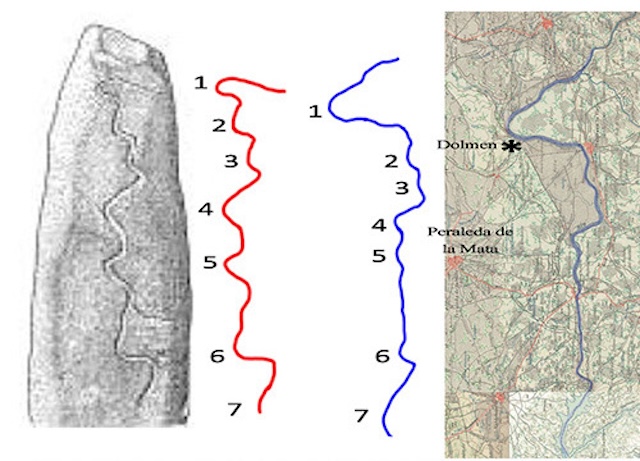
Architectural Significance
Architecturally, the Dolmen of Guadalperal is a marvel of prehistoric engineering. The structure is composed of large granite stones, some standing over six feet tall, arranged in a circle with a central passageway leading to the burial chamber. This arrangement bears a striking resemblance to Stonehenge in England, hence the nickname “Spanish Stonehenge.”
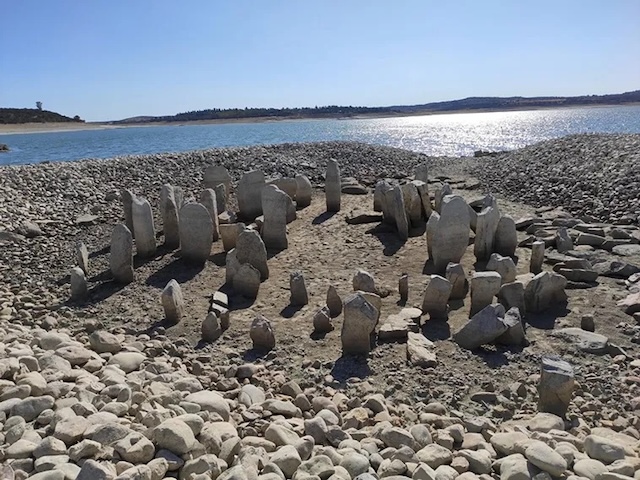
The design of the dolmen suggests that it was constructed with both functional and symbolic purposes in mind. The large stones would have required significant effort to quarry, transport, and erect, indicating that the construction was a communal effort of considerable importance. The use of such massive stones also implies that the dolmen was meant to endure, serving as a lasting monument to the individuals buried within.
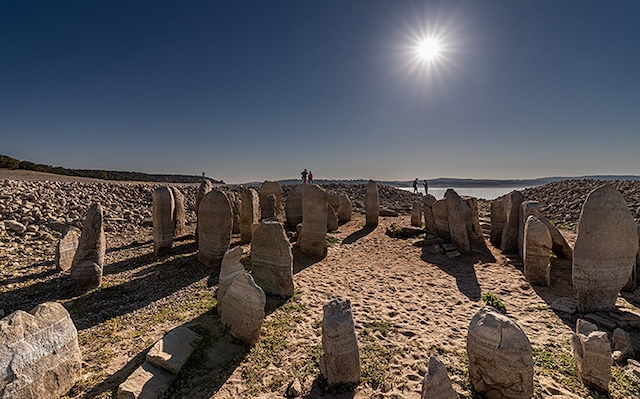
The Mystery of Its Origin
Despite its imposing presence, much about the Dolmen of Guadalperal remains shrouded in mystery. Scholars have debated its exact age, with estimates ranging from 4,000 to 7,000 years old. The purpose of the dolmen is similarly uncertain, with some theories suggesting it served as a tomb for elite members of the community, while others propose it was used for religious ceremonies or as an astronomical observatory.
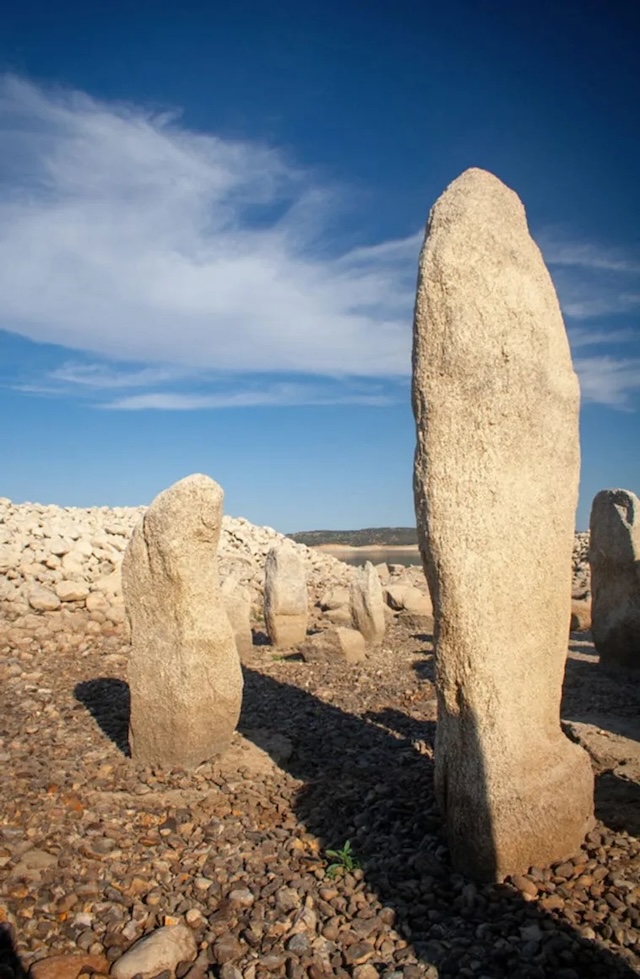
One of the most intriguing aspects of the dolmen is its potential alignment with celestial bodies. Some researchers believe that the structure was intentionally positioned to align with the movements of the sun and moon, similar to other megalithic sites across Europe. This alignment could have had significant implications for the people who built the dolmen, perhaps marking important dates in the agricultural calendar or serving as a venue for rituals tied to the changing seasons.
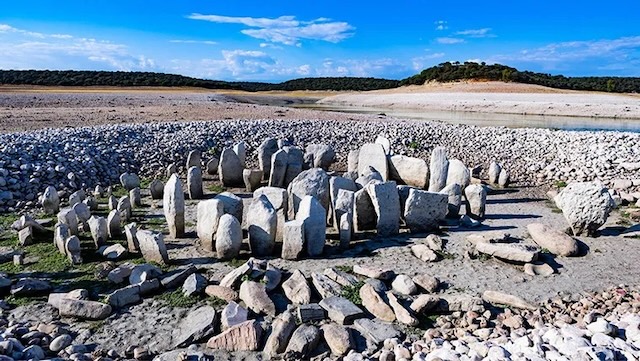
Preservation and Threats
The reemergence of the Dolmen of Guadalperal has brought both excitement and concern. While its resurfacing has allowed for renewed study and appreciation, it has also exposed the monument to the elements and the risk of damage. The stones, once protected by water, are now vulnerable to erosion, vandalism, and the effects of time.
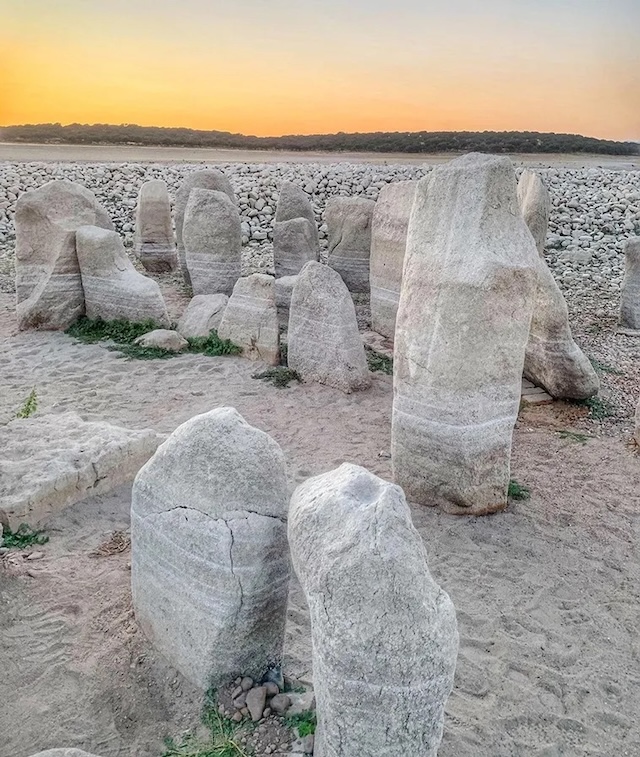
Efforts to preserve the dolmen have been spearheaded by local communities and archaeologists who recognize its cultural and historical value. There is ongoing debate about the best course of action—whether to leave the dolmen in place, risking further damage, or to relocate it to a safer location where it can be better protected and studied.
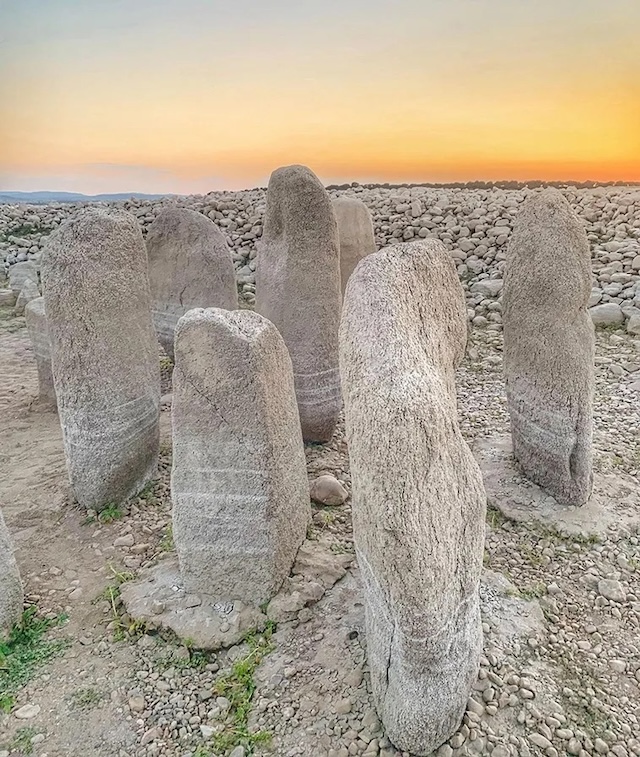
Tourism and Accessibility
Since its reappearance, the Dolmen of Guadalperal has quickly become a popular tourist attraction. Visitors from around the world come to marvel at the ancient stones and contemplate the mysteries of its origin. The site’s remote location adds to its allure, offering a serene setting where visitors can step back in time and imagine what life might have been like for the people who built this monumental structure.
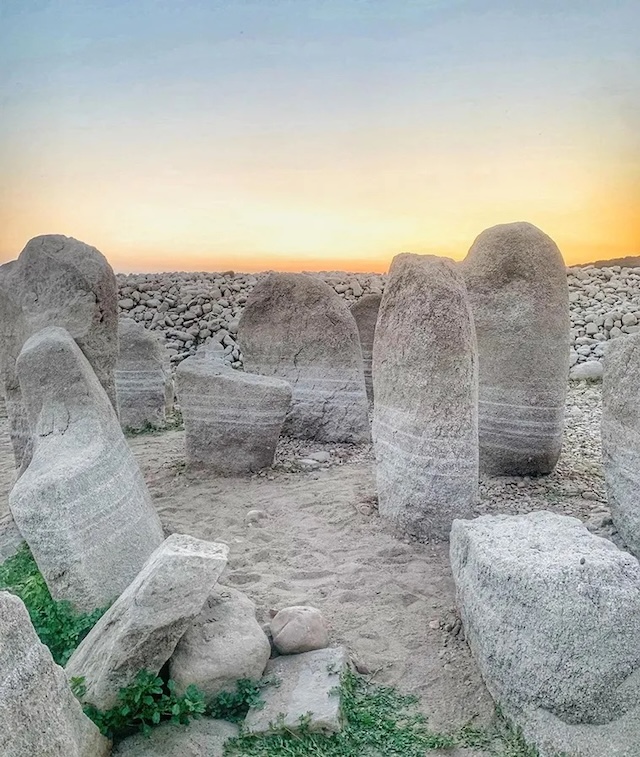
For those planning to visit, it is important to check the water levels of the Valdecañas Reservoir, as the dolmen is not always accessible. The best time to visit is during periods of drought when the monument is fully exposed. Visitors are encouraged to respect the site, adhering to guidelines that help preserve the integrity of the stones and the surrounding environment.
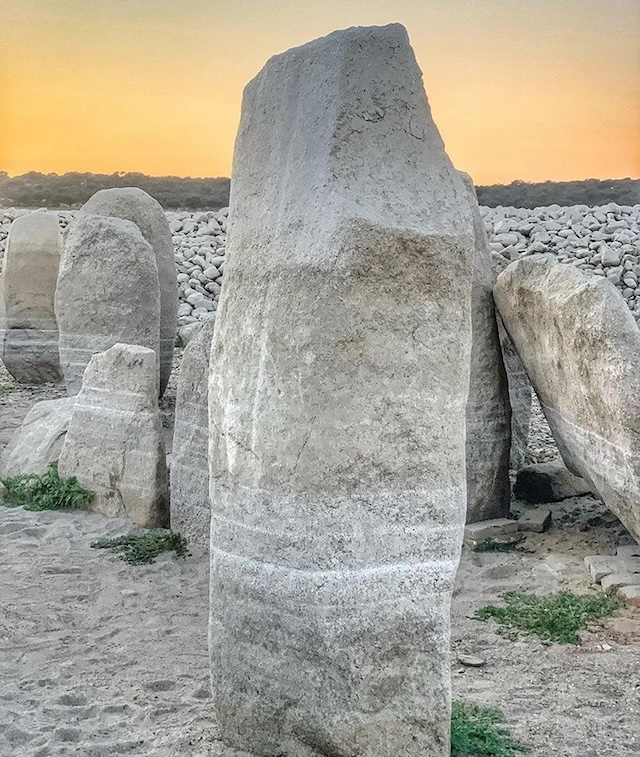
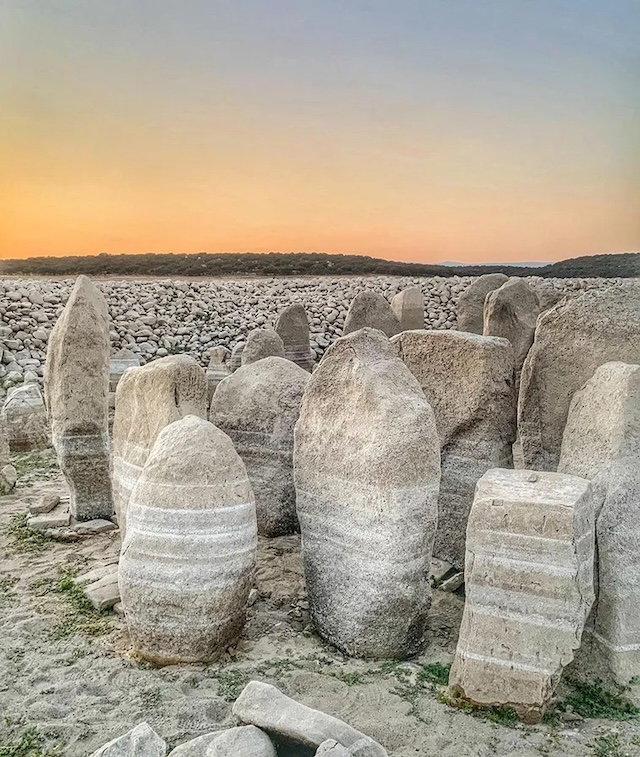
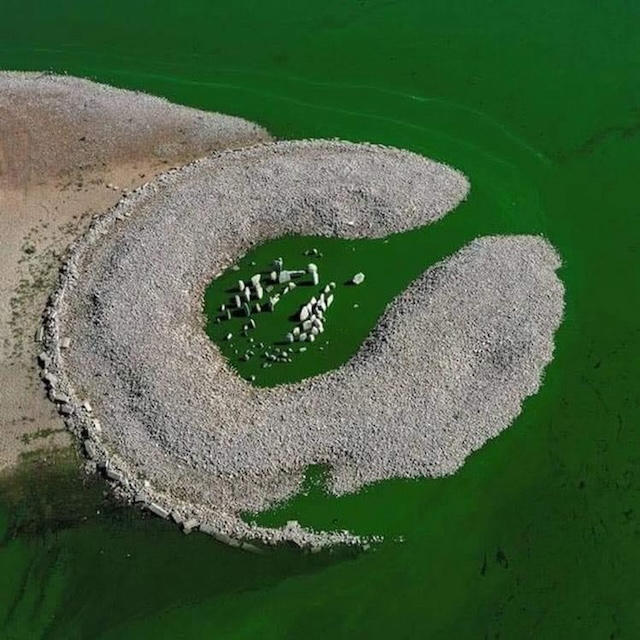
The Dolmen of Guadalperal stands as a testament to the ingenuity and spirituality of prehistoric peoples. Its history of discovery, submersion, and reemergence adds to the mystique of this ancient monument, making it a site of great interest for historians, archaeologists, and curious travelers alike. As efforts continue to preserve and study the dolmen, it remains a powerful symbol of the enduring human connection to the past and the mysteries that continue to fascinate us across millennia.